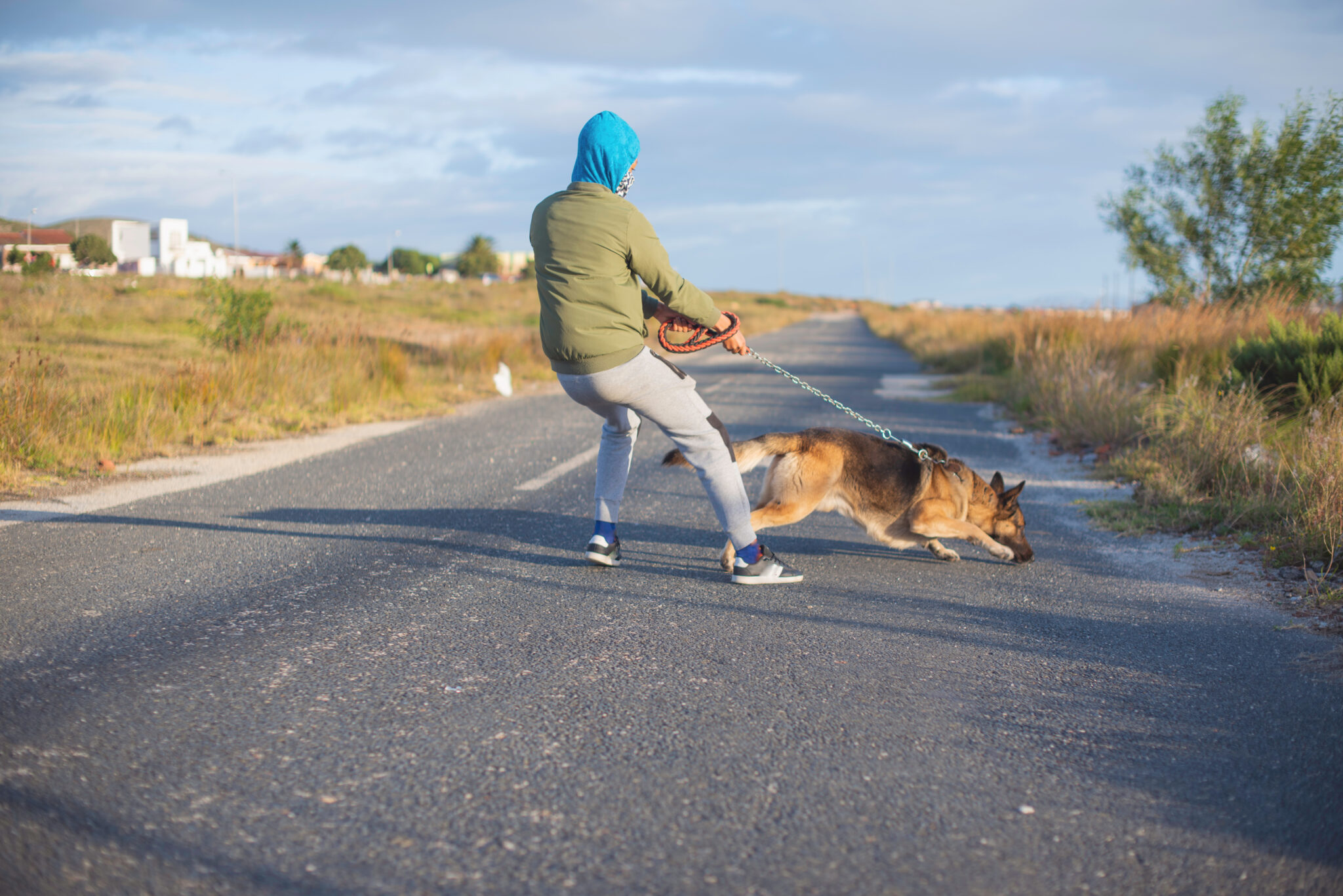
Introduction
If you’ve ever found yourself being dragged down the street by an eager pup, you’re not alone. One of the most common frustrations dog guardians face is leash pulling. Walks should be a peaceful, enjoyable experience, but when your dog turns into a four-legged sled dog, it’s easy to feel defeated.
But before jumping to conclusions, it’s important to understand why dogs pull on leashes in the first place. Spoiler: It’s not because they’re being stubborn or trying to dominate you. In fact, pulling is usually a result of natural instincts, excitement, and lack of proper training.
Let’s break down the reasons your dog might be pulling and what you can do to help them walk more politely—without using punishment or outdated techniques.
1. Why Dogs Pull on Leash: It Works
The number one reason why dogs pull on leash is simple—they’ve learned that it works. Every time your dog pulls and gets to move forward, sniff something interesting, or greet another dog, they’re being rewarded for that behavior.
Even if pulling only works occasionally, that’s enough reinforcement to make the habit stick. From your dog’s perspective, pulling gets results. They don’t understand why we want them to walk slowly by our side when the world is so exciting.
If we want to change the behavior, we need to make walking politely even more rewarding than pulling—and we need to stop letting pulling pay off.
2. Loose Leash Walking Is Not a Natural Skill
Another key reason why dogs pull on leash is because they haven’t yet learned how not to. Dogs aren’t born knowing how to heel or walk at our pace. It’s a trained behavior that requires time, patience, and lots of positive reinforcement.
Most dogs naturally move faster than we do. Their gait is different, and their motivations are, too. They want to follow their nose, chase after movement, and explore their environment. Asking them to slow down and stay close is an unnatural request—so it’s no surprise when they pull ahead.
To teach loose-leash walking, we need to start with the basics in low-distraction environments and gradually build the skill through short, focused sessions.
3. Overexcitement, Understimulation, and the Need to Explore
Sometimes the reason why dogs pull on leash has to do with energy—not disobedience. High-energy dogs, puppies, and under-stimulated dogs are especially likely to pull. If walks are their only outlet for physical and mental enrichment, they’ll try to cram as much exploration as possible into a short time.
That overexcitement can look like darting in different directions, ignoring cues, or lunging toward interesting sights and smells. It’s not bad behavior—it’s enthusiasm and curiosity.
To help with this, try giving your dog more mental enrichment outside of walks. Food puzzles, training games, and play sessions can take the edge off and make walks more manageable. You can also build in “sniff breaks” during walks, giving your dog a clear cue that it’s time to explore more freely.
4. The Role of Equipment and the Opposition Reflex
A less obvious reason why dogs pull on leash is something called the opposition reflex. When dogs feel pressure on the leash—especially from collars or restrictive gear—they instinctively resist by pulling harder. This reflex is completely natural and can make the problem worse if we respond by pulling back.
Using humane equipment like a back-clip harness can help reduce pulling without discomfort. These harnesses gently redirect the dog’s movement and make pulling less effective, helping set your dog up for success as you teach them how to walk nicely.
At the same time, avoid equipment that relies on pain, fear, or physical correction. Not only are these tools inhumane, but they also increase stress and can worsen leash reactivity over time.
Conclusion
Understanding why dogs pull on leashes is the first step toward more peaceful, enjoyable walks. Whether it’s because the behavior has been unintentionally reinforced, they haven’t learned the right skills yet, or they’re bursting with energy and curiosity, leash pulling is a solvable issue—with the right approach.
By using positive reinforcement, rewarding calm walking, and communicating clearly with our dogs, we can shift from frustrating tug-of-war to walks that both ends of the leash can enjoy.
Does your dog pull on leash? What’s been your biggest challenge—or breakthrough—in teaching loose-leash walking? Share your story in the comments below! I’d love to hear from you.

